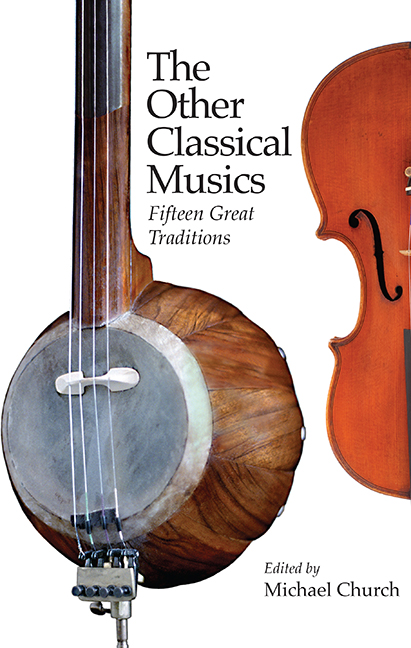Book contents
- Frontmatter
- Dedication
- Contents
- List of Illustrations
- List of Contributors
- Preface and Acknowledgements
- Introduction
- Maps
- 1 Thailand, Laos, Cambodia, Vietnam
- 2 Java
- 3 Japan
- 4 China: The Guqin Zither
- 5 Chinese Opera
- 6 North India
- 7 South India
- 8 Mande Jaliyaa
- 9 North American Jazz
- 10 Europe
- 11 North Africa and the Eastern Mediterranean: Andalusian Music
- 12 The Eastern Arab World
- 13 Turkey
- 14 Iran
- 15 Uzbekistan and Tajikistan
- Notes
- Bibliographies
- Index
9 - North American Jazz
Published online by Cambridge University Press: 29 May 2021
- Frontmatter
- Dedication
- Contents
- List of Illustrations
- List of Contributors
- Preface and Acknowledgements
- Introduction
- Maps
- 1 Thailand, Laos, Cambodia, Vietnam
- 2 Java
- 3 Japan
- 4 China: The Guqin Zither
- 5 Chinese Opera
- 6 North India
- 7 South India
- 8 Mande Jaliyaa
- 9 North American Jazz
- 10 Europe
- 11 North Africa and the Eastern Mediterranean: Andalusian Music
- 12 The Eastern Arab World
- 13 Turkey
- 14 Iran
- 15 Uzbekistan and Tajikistan
- Notes
- Bibliographies
- Index
Summary
It's jazz night at a local restaurant. There's no permanent stage: musicians squeeze into a small nook at the front. The drummer and bass are in the rear, their backs against the neon sign in the plate-glass window. The leader of the group, a silver-haired trumpet player, brings in the band with brief grunts on the backbeat before launching into a complicated unison line with his saxophonist. His improvisations are melodically inventive and rhythmically brisk, pulling the band into sharper focus. When he finishes playing, he strolls away from the stand to chat with a friend, while keeping an eye on the band.
The atmosphere is casual: many in the audience simply drink and chat. Yet there's an atmosphere of seriousness and expectation. People are deeply attentive, leaning forward and cheering the end of each solo. The musicians don't seem to notice either the audience or the music on their stands; their concentration and satisfaction is evident. The saxophonist leans against the wall, his eyes closed, while the guitarist rocks back and forth, a smile warming his face. The music is wild and chaotic, but always under control, and it ends on a crisply-timed syncopation.
JAZZ does not have a long history. Indeed, compared to many of the musics covered in this book, which often span centuries, it barely has a tradition at all. It emerged about a hundred years ago in rough, working-class neighbourhoods of New Orleans with a jaunty, polyphonic style that bears little relation to the intricate chamber music that is played today. ‘Modern jazz’ – the kind currently heard in nightclubs, concert halls and other venues across the country – did not take shape until the 1940s and 1950s, well within living memory. As an improvised music, it gives little sense in live performance that it cares terribly much about its past.
Beneath this surface, though, are layers of cultural meaning – especially for African Americans, who are disproportionately represented among its creators. Although musicians of every race play jazz, there is general agreement that its origins lie in black culture. Indeed, it is the most highly developed musical tradition created by African Americans over a period that encompasses their most stringent trials for citizenship.
- Type
- Chapter
- Information
- The Other Classical MusicsFifteen Great Traditions, pp. 198 - 215Publisher: Boydell & BrewerPrint publication year: 2015
- 2
- Cited by

